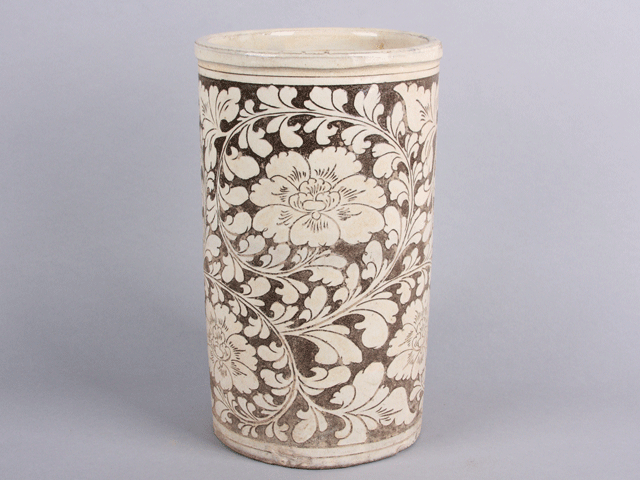
Cizhou ware
For thousands of years, China has been at the forefront of ceramic innovation. Perhaps no period better expresses this creativity than the Sòng (宋朝) dynasty, when all of the ingredients of ceramic artistry—forming techniques, glazes, firing processes, and aesthetics—came together as never before.
The shapes of the Sòng Dynasty are elegantly simple by comparison to what preceded them and what was to follow. Likewise, the glazes tend to be monochromatic and subtle, an integral part of the vessel they cover, rather than creating a picture applied to the vessel. Color and texture show a richness unrivaled in earlier Chinese ceramic production. Song aesthetic sophistication was matched by an incredible inventiveness, which led to a variety of classic wares associated with specific regions of China. It was during this period that court-patronized kilns became famous. These included the five royal kilns: Ru (汝), Guan (官), Ge (哥), and Jun (鈞), now all gone, and the city that has become synonymous with porcelain production, Jingdezhen (景德镇市).
Perhaps the subtlest (and to many connoisseurs, the most beautiful) glaze of this period is oil-spot glaze or tian mu (天目), also known as tenmoku.
See source code for copyright information. Page last revised on October 3, 2014. Please report problems to toh@unm.edu